Weird Images: What the Heck Is That?
Intrigued?
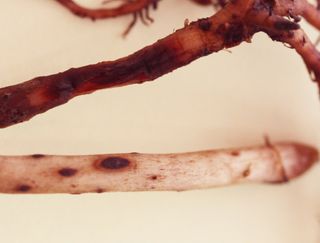
I know what you're thinking … this has nothing to do with anything naughty. Any guesses?
It's a little more grounded than ... They are banana roots.
An international team of scientists found that some banana types accumulate certain plant toxins near root tissues attacked by the parasitic nematode called Radopholus similis. That toxin is critical in giving the banana resistance to the pest, which stores droplets of the toxin and finally dies.
Here, the root of the susceptible banana variety Grande Naine (above) and the resistant banana variety Yangambi km5 (below).
Biomineral Single Crystals
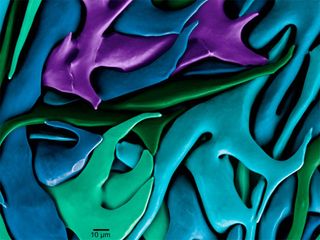
Biomineral crystals found in a sea urchin tooth. Geologic or synthetic mineral crystals usually have flat faces and sharp edges, whereas biomineral crystals can have strikingly uncommon forms that have evolved to enhance function. The image here was captured using environmental scanning electron microscopy and false-colored. Each color highlights a continuous singlecrystal of calcite (CaCO3) made by the sea urchin Arbacia punctulata, at the forming end of one of its teeth. Together, these biomineral crystals fill space, harden the tooth, and toughen it enough to grind rock.
Favorite Microbe Hangouts
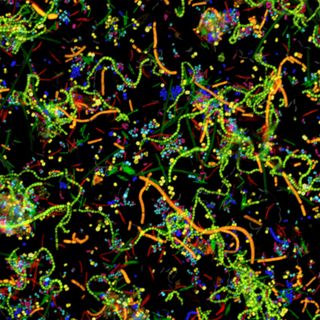
Microbes crawling around our bodies gravitate to and "hang out" with certain other types of bacteria in their little community. Researchers have known this much about microbes. But until now they could not see these cliques in action. A new microscope technique called CLASI-FISH (combinatorial labeling and spectral imaging fluorescent in situ hybridization), gave scientists at the Marine Biological Laboratory in Woods Hole, Mass., a peak at the spatial arrangement of up to 20 microbes in a single field of view. They used the technique to analyze dental plaque, a complex biofilm known to contain at least 600 species of microbes. They were able to visually discriminate 15 different microbial types (shown here), and to determine which two types – Prevotella and Actinomyces – showed the most interspecies associations.
Pink and wrinkly
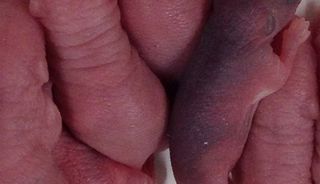
Pink and wrinkly, these little blobs are clearly some type of weird organism right?
Yep, they're newborn mice all cuddled together. Shown here, two black pups (note the black eyes) born via C-section among naturally albino pups in the lab. A foster mom raised the pups. See the full photo on the next slide.
Cuties
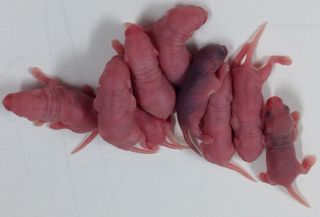
These newborn mice were part of a study that revealed just two genes are needed for male reproduction, at least in mice.
In the study, researchers injected two Y-chromosome genes into mouse embryos that lacked a Y chromosome, finding the embryos grew into adult mice that could produce offspring through assisted reproduction techniques. [Read full story]
Broken pottery?
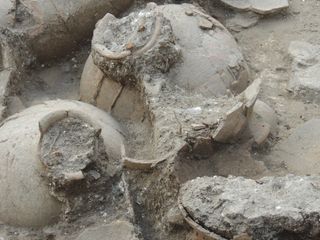
Old crushed flower pots? Well, they are old, 3,700 years old. These jars were discovered in an ancient palatial wine cellar unearthed by researchers at Tel Kabri in July 2013. The team worked in day and night shifts to excavate a total of 40 intact vessels during its six-week dig.
Result? The oldest known palatial wine cellar in the Middle East. The ancient wine bore little resemblance to the Bordeaux and Chianti of today — it was preserved and spiced with resin and herbs, including juniper, mint and myrtle. Some might say perfectly aged wine. [Read more about the ancient wine cellar]
Pretty landscape?
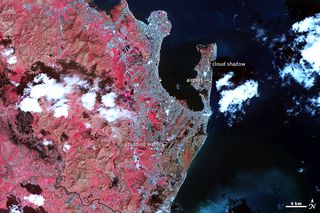
It's a satellite image of course, but of what? The image was snapped by the ASTER instrument aboard NASA's Terra satellite on Nov. 15, 2013, after a devastating storm.
Super Typhoon Haiyan struck the Philippines on Nov. 8, 2013, pounding the island of Leyte (shown here) with winds nearing 195 mph (315 km/h) and a huge storm surge. This false-color image, and the "before" shot on the next slide, reveal some of the storm's devastating impacts.
The most dramatic change can be seen in the hills above Tacloban, a hard-hit city on Leyte, reports NASA's Earth Observatory. Comparing ASTER images snapped in 2004 (next slide) and in 2013, just days after the storm, reveals the hills were stripped bare of vegetation. Debris covers Tacloban, and floodwater ponds and upturned trees stripped of leaves dot the ravaged landscape. (Plant-covered land is red; bare ground is tan; water and shadows are black.)
Sign up for the Live Science daily newsletter now
Get the world’s most fascinating discoveries delivered straight to your inbox.
haiyan before image
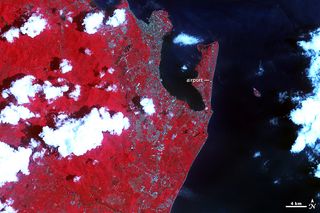
The Advanced Spaceborne Thermal Emission and Reflection Radiometer (ASTER) instrument aboard NASA's Terra satellite snapped this image of the Philippine island of Leyte on April 3, 2004 before Super Typhoon Haiyan hit on Nov. 15, 2013. (Plant-covered land is red; bare ground is tan; water and shadows are black.)
Sulfosalicylic Acid Crystal Formation
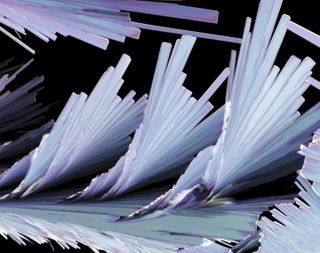
This image shows sulfosalicylic acid crystal formation as seen magnified 200 times using polarized light. The photo was taken by Thomas Balla of Fort Collins, Colo., and received honorable mention at Nikon's 2013 Small World microphotography competition.
Neon lights?
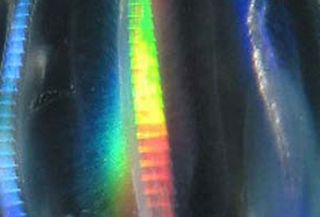
This is a tough one, especially without seeing the full image.
Hints? If you are a biologist, you'll have a good shot at it. If you're a marine biologist, you have no excuse for not knowing, perhaps.
Answer: The image shows light refracting off a comb jelly, which is not a jellyfish. See the whole thing in the next slide.
Comb jelly
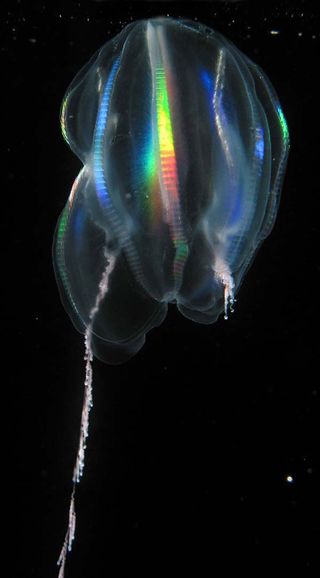
Comb jellies have connective tissues and a nervous system, and though they have tentacles and are all squishy, they are not really true jellyfish. In 2008, scientists discovered evidence indicating comb jellies were the first animals (sponges had previously laid claim to that title).
Most Popular




